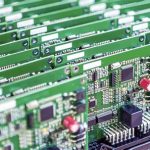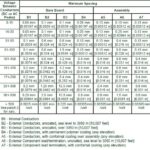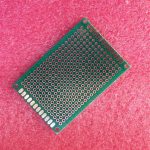What are Active and Passive Components in Electronics?
Electronic circuits are made up of various components that can be broadly classified into two categories: active components and passive components. Understanding the difference between these two types of components is crucial for anyone working with electronic circuits.
Active Components
Active components are those that can control the flow of electricity and can amplify or switch electronic signals. They require a source of energy to operate and can introduce gain or control into a circuit. Examples of active components include:
- Transistors
- Integrated Circuits (ICs)
- Diodes
- Operational Amplifiers (Op-amps)
- Silicon-Controlled Rectifiers (SCRs)
- Triacs
These components are called “active” because they can control the flow of electricity and perform various functions such as amplification, switching, and rectification.
Passive Components
Passive components, on the other hand, do not require any external power source to operate and do not have the ability to control or amplify electronic signals. They are called “passive” because they do not actively participate in the operation of the circuit. Instead, they passively respond to the flow of electricity. Examples of passive components include:
- Resistors
- Capacitors
- Inductors
- Transformers
- Fuses
- Switches
These components perform various functions such as limiting current, storing charge, filtering signals, and protecting circuits from damage.
Characteristics of Active Components
Transistors
Transistors are one of the most important active components in modern electronics. They are semiconductor devices that can amplify or switch electronic signals. Transistors come in two main types: bipolar junction transistors (BJTs) and field-effect transistors (FETs).
| Transistor Type | Subtypes | Characteristics |
|---|---|---|
| Bipolar Junction Transistor (BJT) | NPN, PNP | Current-controlled, high current gain, low input impedance |
| Field-Effect Transistor (FET) | JFET, MOSFET | Voltage-controlled, high input impedance, low noise |
Transistors are used in a wide range of applications, including amplifiers, switches, logic gates, and voltage regulators.
Integrated Circuits (ICs)
Integrated circuits are miniaturized electronic circuits that contain multiple components, such as transistors, diodes, and resistors, on a single semiconductor chip. ICs come in various types, including:
- Analog ICs (e.g., operational amplifiers, voltage regulators)
- Digital ICs (e.g., logic gates, microprocessors, memory chips)
- Mixed-signal ICs (e.g., analog-to-digital converters, digital-to-analog converters)
ICs have revolutionized the electronics industry by enabling the creation of smaller, faster, and more complex electronic devices.
Diodes
Diodes are two-terminal semiconductor devices that allow current to flow in only one direction. They are used for various purposes, such as rectification, voltage regulation, and protection against reverse polarity. Some common types of diodes include:
- Rectifier diodes
- Zener diodes
- Schottky diodes
- Light-emitting diodes (LEDs)
Diodes play a crucial role in converting alternating current (AC) to direct current (DC) and in protecting circuits from damage caused by reverse voltage or current.
Operational Amplifiers (Op-amps)
Operational amplifiers are high-gain electronic voltage amplifiers with differential inputs and a single output. They are used in a wide range of applications, including:
- Amplification
- Filtering
- Signal conditioning
- Analog computation
Op-amps are designed to perform mathematical operations on analog signals, such as addition, subtraction, integration, and differentiation.
Characteristics of Passive Components
Resistors
Resistors are two-terminal passive components that oppose the flow of electric current. They are used to control the current in a circuit, divide voltages, and provide electrical resistance. Resistors come in various types, including:
- Fixed resistors
- Variable resistors (e.g., potentiometers, rheostats)
- Surface-mount resistors
- Wire-wound resistors
The resistance of a resistor is measured in ohms (Ω) and is governed by Ohm’s law, which states that the voltage across a resistor is directly proportional to the current flowing through it.
Capacitors
Capacitors are two-terminal passive components that store electrical energy in an electric field. They are used for various purposes, such as filtering, coupling, decoupling, and energy storage. Capacitors come in various types, including:
- Ceramic capacitors
- Electrolytic capacitors
- Film capacitors
- Variable capacitors
The capacitance of a capacitor is measured in farads (F) and depends on the area of the plates, the distance between them, and the dielectric material used.
Inductors
Inductors are two-terminal passive components that store electrical energy in a magnetic field. They are used for various purposes, such as filtering, impedance matching, and energy storage. Inductors come in various types, including:
- Air-core inductors
- Ferrite-core inductors
- Iron-core inductors
- Surface-mount inductors
The inductance of an inductor is measured in henries (H) and depends on the number of turns, the cross-sectional area, and the magnetic permeability of the core material.
Transformers
Transformers are passive components that transfer electrical energy between two or more circuits through electromagnetic induction. They are used for various purposes, such as voltage step-up or step-down, isolation, and impedance matching. Transformers consist of two or more coils of wire wound around a common magnetic core.
The voltage ratio between the primary and secondary windings of a transformer is determined by the ratio of the number of turns in each winding, while the current ratio is inversely proportional to the voltage ratio.

Applications of Active and Passive Components
Active and passive components are used in a wide range of electronic applications, including:
- Power supplies
- Amplifiers
- Oscillators
- Filters
- Communication systems
- Control systems
- Sensors and transducers
By combining active and passive components in various configurations, electronic engineers can design circuits that perform specific functions and meet the requirements of different applications.
Frequently Asked Questions (FAQ)
1. What is the main difference between active and passive components?
The main difference between active and passive components is that active components require an external power source to operate and can control or amplify electronic signals, while passive components do not require external power and cannot control or amplify signals.
2. Can a circuit function without passive components?
While it is possible to have a circuit that consists only of active components, most practical circuits require a combination of active and passive components to function properly. Passive components are essential for tasks such as current limiting, voltage division, filtering, and energy storage.
3. What are some common examples of integrated circuits?
Some common examples of integrated circuits include operational amplifiers, microprocessors, memory chips, analog-to-digital converters, and digital-to-analog converters.
4. How do capacitors store electrical energy?
Capacitors store electrical energy in an electric field between two conductive plates separated by a dielectric material. When a voltage is applied across the plates, an electric field develops, causing charge to accumulate on the plates.
5. What is the purpose of a transformer in an electronic circuit?
The primary purpose of a transformer in an electronic circuit is to transfer electrical energy between two or more circuits while providing electrical isolation and changing the voltage levels. Transformers are commonly used in power supplies, audio systems, and communication equipment.
Conclusion
Active and passive components are the building blocks of electronic circuits. Active components, such as transistors, integrated circuits, and diodes, require an external power source and can control or amplify electronic signals. Passive components, such as resistors, capacitors, inductors, and transformers, do not require external power and cannot control or amplify signals.
Understanding the characteristics and functions of these components is essential for designing, analyzing, and troubleshooting electronic circuits. By combining active and passive components in various configurations, electronic engineers can create circuits that perform a wide range of functions and meet the requirements of different applications.
As technology continues to advance, new types of active and passive components are being developed to improve the performance, efficiency, and reliability of electronic devices. However, the fundamental principles governing the behavior of these components remain the same, making a solid understanding of active and passive components an invaluable asset for anyone working in the field of electronics.






Leave a Reply